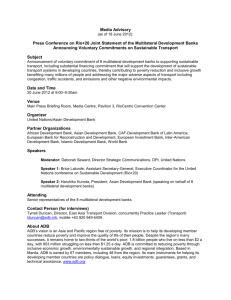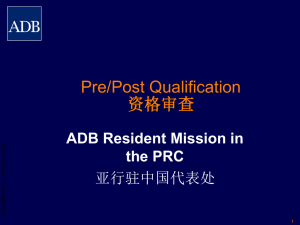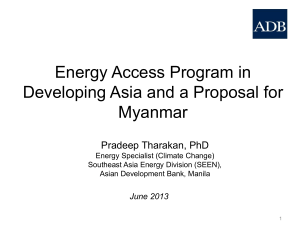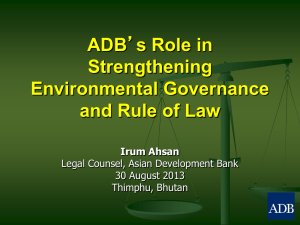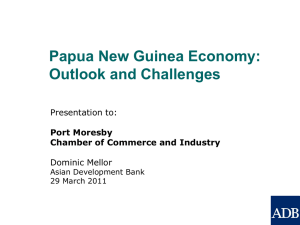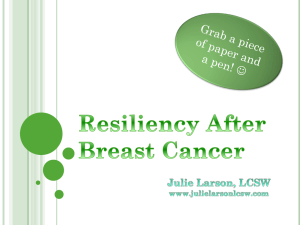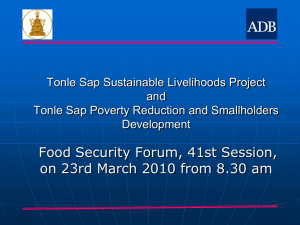Climate Risk Assessment Methodology Best
advertisement
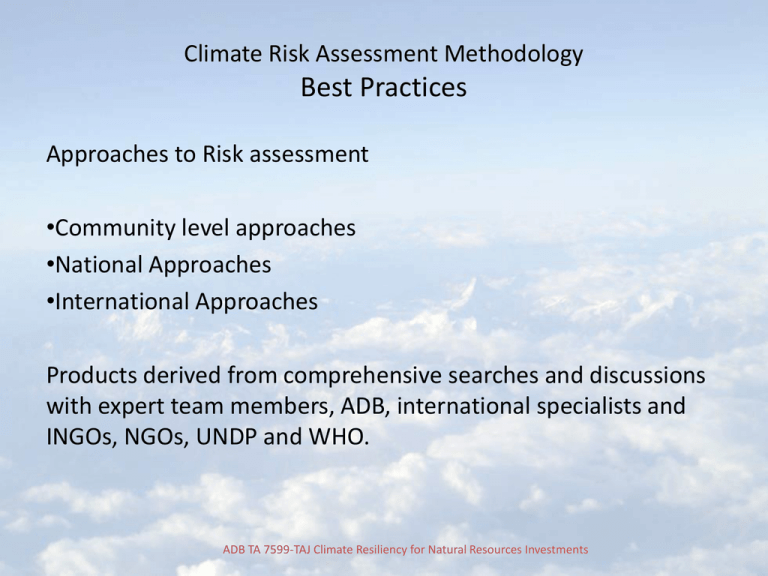
Climate Risk Assessment Methodology Best Practices Approaches to Risk assessment •Community level approaches •National Approaches •International Approaches Products derived from comprehensive searches and discussions with expert team members, ADB, international specialists and INGOs, NGOs, UNDP and WHO. ADB TA 7599-TAJ Climate Resiliency for Natural Resources Investments Climate Risk Assessment Methodology Best practices Approaches to Risk assessment: Community level approaches In Tajikistan these include: •OxFam •ACTED •GIZ •Camp Khuriston •Caritas •FOCUS Humanitarian Tools include: MecoRat (Mission East, Caritas, Oxfam) ACTED Maps ADB TA 7599-TAJ Climate Resiliency for Natural Resources Investments Climate Risk Assessment Methodology Best practices Community level approaches Strengths: •Based on working with local people •Develop local capacity •Often comprehensive approach to identifying & evaluating risks •Sensitive to gender and special needs •End – to – End approach: from hazard to resilience •Embrace development as a risk mitigation strategy Limitations •May be time consuming •May not be replicable at all scales •May focus on a few hazards •May generate expectations ADB TA 7599-TAJ Climate Resiliency for Natural Resources Investments Climate Risk Assessment Methodology Best practices National level approaches CoES / UNDP “Guidelines on Regional Disaster Risk Assessment for the Territory of Tajikistan” 2011 •designed for use by Govt., NGOs and INGOs for natural risk assessment and analysis at the regional level for disaster prevention and mitigation and also development planning •Sets out a detailed technical process for identifying and assessing hazards and risks ADB TA 7599-TAJ Climate Resiliency for Natural Resources Investments Climate Risk Assessment Methodology Best practices CoES / UNDP “Guidelines on Regional Disaster Risk Assessment for the Territory of Tajikistan” 2011 Strengths •Strong consultative process •Developed with local and international expertise & with CoES partnership •Systematic process Limitations •Technical approach •Not clearly linked with development ADB TA 7599-TAJ Climate Resiliency for Natural Resources Investments ADB TA7599 TAJ Climate Resilience for Natural Resources Investments Climate Risk Assessment Methodology Best practices International approaches IPCC: Schneider et al “Assessing key vulnerabilities and the risk from climate change” 2007 IPCC: Carter et al “Technical Guidelines for Assess Climate Change Impacts and Adaptations” 1994 UNFCC: Pinto et al “Compendium on methods and tools to evaluate impacts of, and vulnerability and adaptation to, climate change” 2008 World Bank: “Guidance Notes: Mainstreaming Adaptation to Climate Change in Agriculture and Natural Resources Management Projects” nd USAID: “Adapting To Climate Variability And Change : A Guidance Manual For Development Planning” 2007 IDS SEI… and many more others ADB TA 7599-TAJ Climate Resiliency for Natural Resources Investments ADB TA7599 TAJ Climate Resilience for Natural Resources Investments Climate Risk Assessment Methodology Best practices International approaches Strengths • Comprehensive approach • Use a variety of methods • Provide useful strategic and policy advice Limitations • Many different (but technically similar) methods • May be time consuming and expensive to conduct • Apply at different scales so harmonisation may be difficult ADB TA 7599-TAJ Climate Resiliency for Natural Resources Investments


